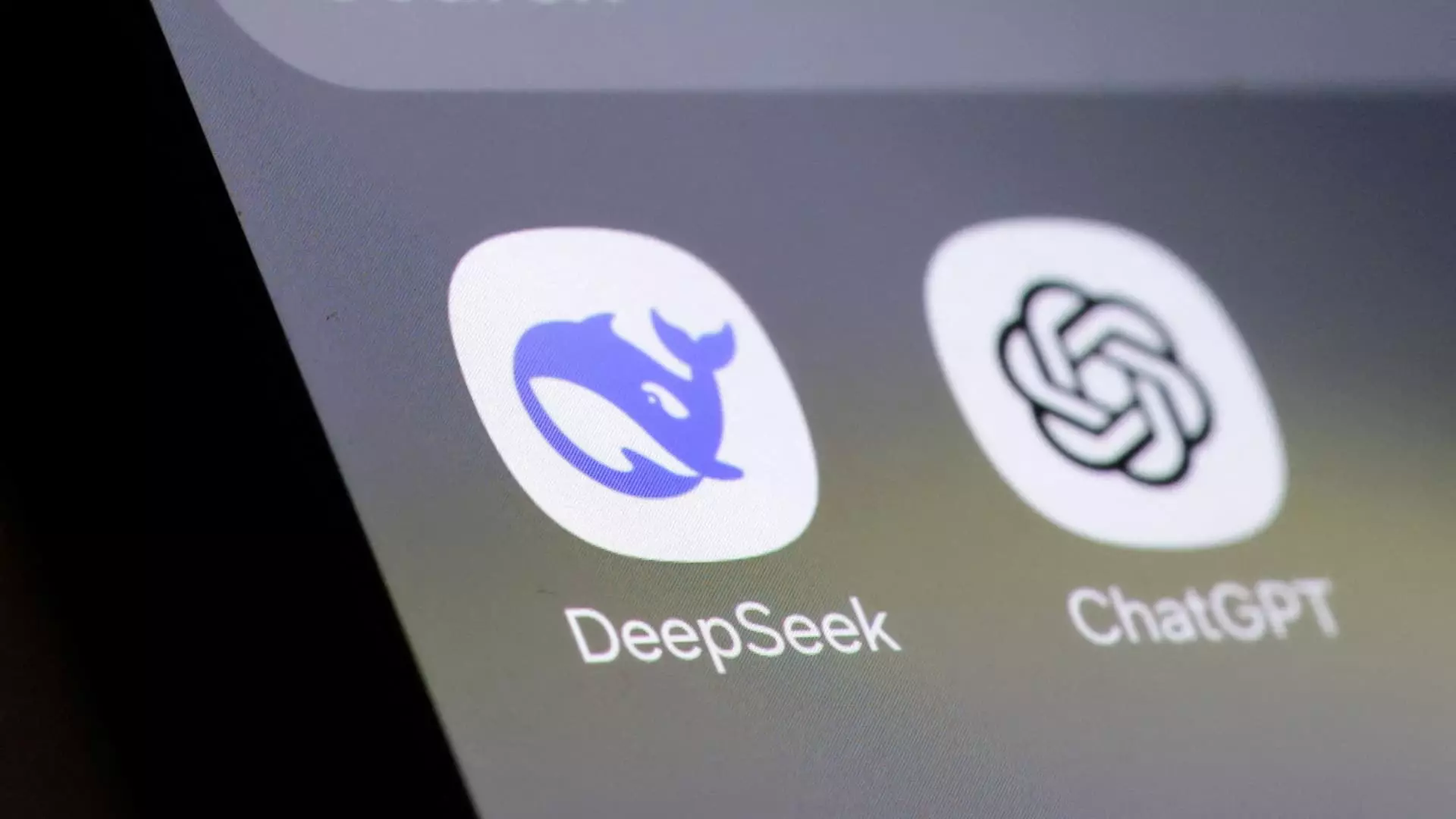In a remarkable turn of events, the Chinese artificial intelligence landscape is witnessing a tectonic shift with the advent of DeepSeek’s latest AI model, R1. Since its launch, this innovative technology has gained substantial traction among a diverse range of Chinese industries, where companies are keen to leverage AI’s capabilities to enhance productivity and operational efficiency. Unlike prior models that may have dominated the market, DeepSeek’s competitive pricing and open-source access democratize AI technology, making it reachable for a multitude of businesses regardless of their scale or financial capacity.
DeepSeek, born from a quantitative hedge fund in 2023, released the basic version of its R1 in November before debuting the refined model in January. This rapid development cycle has positioned the company as a formidable player in the AI race, particularly noteworthy given the barriers presented by U.S. restrictions on essential semiconductor technologies required for advanced AI development in China.
The pace at which DeepSeek is being integrated into various sectors underscores its potential catalytic impact on the economy. Major players across the automotive, finance, telecommunications, and technology sectors—including BYD, Honor, and leading cloud operators like Alibaba and Tencent—are mobilizing to incorporate DeepSeek’s capabilities. Wei Sun, a principal analyst at Counterpoint Research, highlights this phenomenon, indicating that the widespread adoption and diverse industry applications signify a major shift in the social and economic fabric of China.
Consequently, enthusiasm surrounding AI has buoyed the stock market, with Chinese AI-associated stocks witnessing a significant uptick since the R1 model’s introduction. This recent surge, reported by UBS, demonstrates an impressive 15% rise in such stocks, thereby outpacing the broader market trends reflected by the MSCI China Index.
The rise of DeepSeek reflects a crucial reconfiguration in market perceptions regarding AI. For years, the prevailing belief was that only large corporations could harness sophisticated AI technologies, often perceived as prohibitively expensive and resource-intensive. However, with DeepSeek’s open-source approach and drastically reduced prices compared to competitors like OpenAI, businesses of all sizes are now exploring their AI integration options. James Tong, CEO of Movitech, emphasizes this change, noting that his company experienced a 25% increase in sales after integrating DeepSeek’s technology.
As businesses experiment with local applications of DeepSeek, the accessibility of AI tools is also pushing hardware sales. Notably, the Apple Mac mini has seen a surge in sales, fueled by interest in running DeepSeek’s local model, further intertwining hardware and software in the burgeoning AI sector.
DeepSeek’s introduction raises essential questions about its potential to bolster productivity and profitability across various business sectors. There is optimism surrounding the idea that small and medium-sized enterprises, particularly those that intertwine AI with hardware applications, might realize substantial benefits. Meanwhile, companies focusing primarily on consumer-facing platforms, which have historically prioritized efficiency enhancements, may experience different trajectories regarding their AI investments.
The projections, according to consulting firm Gartner, paint a promising future for AI integration in Chinese business. They anticipate that by 2027, the cost of accessing generative AI models will decrease dramatically, possibly to less than 1% of current rates. By 2029, predictions suggest that 60% of Chinese enterprises will have embedded AI into their core products and services, effectively transforming revenue streams and business models.
In an effort to bolster AI integration, the Chinese government is throwing its weight behind these technologies as well, exemplified by the announcement from the national supercomputing network offering free access to DeepSeek for eligible companies. This initiative echoes similar strategies implemented in the U.S. to enhance AI infrastructure, such as OpenAI’s Stargate project.
Despite this excitement and rapid adoption of DeepSeek, it is crucial to remember that the AI landscape is fluid, with numerous developers emerging in both China and the U.S. to deliver increasingly competitive models. Companies like Movitech and HangHang AI are exploring various options, showing that while DeepSeek is a pioneering force, it exists within a broader ecosystem still ripe for innovation.
While it remains to be seen how deeply generative AI will weave itself into the daily fabric of Chinese business, the trajectory set by DeepSeek suggests a transformative era ahead. By lowering barriers to entry and expanding education on AI technologies, DeepSeek could establish itself not just as a product, but as a pivotal influence in redefining how businesses operate and thrive in an increasingly digital world.

